I realized today that at least half of my readers (which is probably about 3 people) are not from the New Orleans area and have likely never experienced a Mardi Gras parade, so for those of you unfamiliar with how things work down here, I put together a little Mardi Gras parade primer…just a few terms you might not be familiar with, as well as some things I have learned over my years of parading…some the hard way! While I don’t like the word “expert,” I go to upwards of 20 parades a year, and I do know a thing or two. So here you go…Parading 101. (Sounds better than Parading for Dummies.)
1. “Throws” refer to anything thrown by a rider in a parade. These could be beads, doubloons (my favorite), plastic cups, bracelets, stuffed animals, frisbees…you name it. If you are lucky enough to catch a strand of glass beads, a Zulu coconut, or a coveted Muses shoe, you should feel very accomplished.
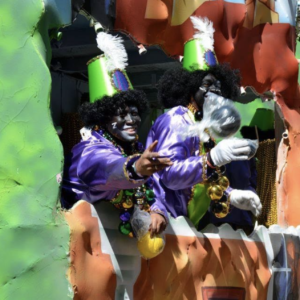
2. A “krewe” is simply a group of men, women, or a mix of the two, who pay a fee, purchase a selection of throws, and ride in a parade. A “superkrewe” is a very large group with equally large floats. Some krewes have more than 3000 riders, and many have long waiting lists to obtain membership. 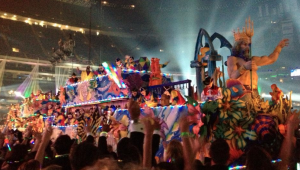
3. Parade ladders are used primarily for small children. They are rigged so that a child or several children can safely sit on top of the ladder in order to receive more throws. Ladders must be six feet from the curb, although it does not seem this rule is strictly enforced. 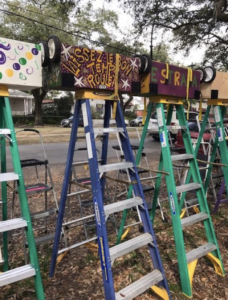
4. Bringing a bag to hold your loot is a must. If you are in a particularly good location, and you are catching more than your bag will hold, ask a rider to throw you an empty one from the float. If they have one and can hear you, they will usually oblige. 
5. The WDSU Parade Tracker app is a handy little tool. You simply click on the parade name, and a map will come up showing the route. A dot will show where you are located and another tracks the movement of the parade. Following the moving dot makes the waiting time a little more bearable. 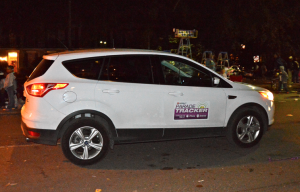
6. It’s time to get really excited when you see the white utility truck equipped with a vertical pole. The pole stands as high as the tallest float in the parade and ensures that a float will not hit a power line or a tree. The pole truck means you are minutes away from a great time.
7. Nets can be helpful, especially when trying to catch a Zulu coconut, a Mardi Gras favorite. Riders are not allowed to throw these hand painted items, for obvious reasons, but if you extend your net out near a float, riders can easily drop a coconut in. If you are lucky enough to get multiple coconuts, you will be considered a local hero if you share one with a less fortunate neighbor.
8. When watching a parade, you will either stand on the “sidewalk side” or the “neutral ground side”, which is a fancy way of saying the median. If you are trying to meet up with friends, you can use these terms to let them know where you are standing. Or if you have a friend riding in the parade, they can easily tell you their location. Ex: Float #5, sidewalk side, lower level. It is important to make a note of this so you can find your rider friend and he or she can give you some good throws…if they can see you, that is. Making a sign your friend will recognize is never a bad idea!
9. Bands from all over the area march in parades throughout the season. The routes are several miles long, and, in most areas, the streets are very narrow. When the parents that walk with the band tell you to back up, BACK UP! If you don’t, you risk getting hit by a baton or trombone or even a tired and cranky parent. 😉 
10. Many years ago, the only light during night parades was provided by Flambeaux, men who walked alongside krewes carrying torches. Paraders would show their appreciation to the Flambeaux by tipping them with quarters. These torches are no longer a necessity, but several krewes still honor this tradition. If you plan to go to a night parade, bring money to tip the Flambeaux. The going rate these days is $1.00.
11. Police officers are stationed all along the parade route and are there to keep us safe. They do an excellent job, and many of them even provide some entertainment while crowds wait for the next parade. If The Wobble or The Cupid Shuffle breaks out, don’t be surprised if you see an officer joining in the fun. And don’t be afraid to jump in too!
12. Standing next to a really cute kid or a very attractive female will seriously hinder your chances at getting the good stuff. Relocate ASAP! 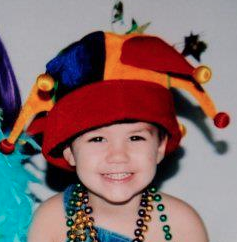
Now, grab a bag and a net, download the app, and head on down to New Orleans. No one will even suspect you’re a newbie!

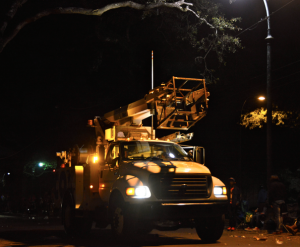
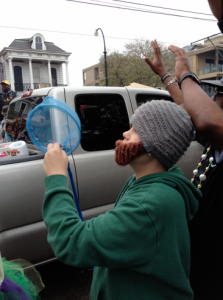
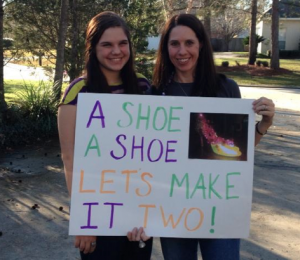
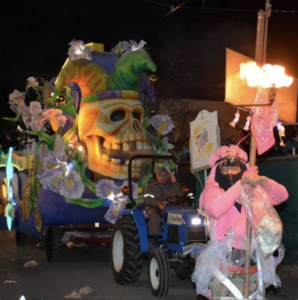
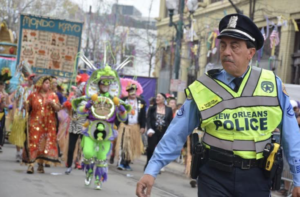
Comments are closed.